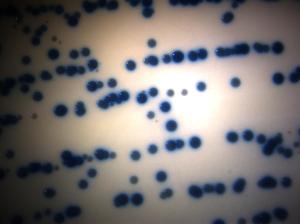Hazardous Waste and Incineration:
Hazardous waste is waste that is dangerous or potentially harmful to human and animal health or the environment. Hazardous wastes can be liquids, solids, gases, or sludges. They can be discarded commercial products, like cleaning fluids or pesticides, or the by-products of manufacturing processes (US-EPA, 2009).
Before a material can be classified as a hazardous waste, it must first be a solid waste as defined under RCRA. Hazardous wastes are divided into (US-EPA, 2009)
- listed wastes,
- characteristic wastes,
- universal wastes and
- mixed wastes
Incineration is “an engineered process using controlled flame combustion to thermally degrade waste materials” (Travis, 1989). It involves the process of complete combustion of solid or liquid waste, an oxidative process used for; detoxification and sterilization, volume reduction, energy recovery, by-product chemical recovery (Cheremisinoff, 1995).
Regulatory Considerations for Hazardous Waste Incineration:
The regulatory bodies are:
- United States – Environmental Protection Agency (US-EPA),
- United Kingdom’s – Environmental Agency & DEFRA – Department for Environment, Food and Rural Affairs
The Resource Conservation and Recovery Act (RCRA), enacted in 1976, were written to provide “cradle to grave” tracking of hazardous waste. Pursuant to RCRA, EPA developed hazardous waste management regulations for generators and treatment, storage, and disposal facilities (TSDFs). In 1984, Congress expanded the scope of RCRA with passage of the Hazardous and Solid Waste Amendments (HSWA). HSWA directed EPA to adopt regulations governing small quantity hazardous waste generators (SQGs) such as many small labs. Most labs routinely generate hazardous waste and, therefore, are subject to RCRA hazardous waste management regulations (40 CFR Parts 260 to 270) (US-EPA, 2009).
These regulations include requirements governing waste classification, accumulation, disposal, recordkeeping, and emergency preparedness. EPA has delegated authority to implement and enforce hazardous waste management programs to the states and tribes. State and tribal regulations are at least as stringent as EPA’s hazardous waste regulations. Still, it is important to keep up with the EPA regulations since EPA regularly publishes new hazardous waste management regulations that are enforceable in the states even though they may not yet be included in a given state’s hazardous waste regulations (US-EPA, 2009).
The Hazardous Waste Regulations in UK which came into force on 16 July, 2005 set down the regime for the control and tracking of the movement of hazardous waste for the purpose of implementing the Hazardous Waste Directive (Directive 91/689/EC). The Regulations include a requirement for hazardous waste producers to notify their premises to the Environment Agency before hazardous wastes can be removed from the premises. They also exempt certain low risk premises from the requirement as long as they produce less than a specified amount of hazardous waste per annum (DEFRA, 2009).
Emissions from Hazardous Waste Incinerators:
EPA promulgated MACT standards for the Phase I facilities on September 30, 1999 (64 FR 52828). The hazardous waste combustor MACT, codified in 40 CFR Part 63, Subpart EEE, subjects affected sources to stringent emission limits for the following HAPs:
- dioxins/furans,
- hydrocarbons,
- carbon monoxide (CO),
- particulate matter,
- non-dioxin organic HAPs (principal organic hazardous constituents [POHCs]),
- mercury,
- semi-volatile metals (i.e., lead and cadmium),
- low volatility metals (i.e., arsenic, beryllium, and chromium), and
- Hydrochloric acid/chlorine gas.
POHCs include halogenated and non-halogenated organic compounds (e.g., polycyclic aromatic hydrocarbons, polychlorinated biphenyls). Particulate matter is composed of sulphate, nitrate, ammonium, and other ions; elemental carbon; particle-bound water; various organic compounds; and numerous elements contained in various compounds (US-EPA, 2005).
Recent studies show, the major toxic metals are lead (Pb), chromium (Cr), cadmium (Cd), and arsenic (As). Mercury (Hg) and Beryllium (Be), is more frequently encountered in this range for hazardous waste incinerators (if at all), even though may be present at higher or lower concentrations with other types of incinerators. The traces of volatile organic compounds (VOCs) and semi-volatile compounds (SVOCs) would include dozens of volatile compounds and perhaps hundreds of semi-volatile compounds, but each compound is present at a very low (sub-ppb) level. Examples include xylenes, ethylbenzene, chlorinated aliphatics, and chlorinated aromatics, as well as various oxygenated compounds (aldehydes, ketones, alcohols) (Hinshaw and Trenholm, 2001).
Risk Associated with Hazardous Waste Incineration:
A risk assessment is an analysis that uses information about toxic substances at a site to estimate a theoretical level of risk for people who might be exposed to these substances. The information comes from scientific studies and environmental data from a site. A risk assessment provides a comprehensive scientific estimate of risk to persons who could be exposed to hazardous materials present at a site (ATSDR, 1999).
Risk assessments, prepared by EPA and other agencies, which are used to determine if levels of toxic substances at hazardous waste sites pose an unacceptable risk as defined by regulatory standards and requirements. It helps regulatory officials determine hazardous site cleanup strategies that will ensure overall protection of human health and the environment. A risk assessment does not measure the actual health effects that hazardous substances at a site have on people. Risk assessments often are conducted without considering actual or possible exposure (ATSDR, 1999).
The potential adverse effects i.e. risk, of hazardous waste incinerators (HWI) continue to be a subject of worry (Carmen Agramunt et al., 2003).
Risk assessment is considered to be an effective scientific tool which enables decision makers to manage hazardous waste-contaminated sites in a cost-effective manner while preserving public health. However, the current risk assessment framework proposed by the US Environmental Protection Agency (US EPA) has limitations in addressing the true variability of population characteristics (Zhao and Kaluarachchi, 2002).
Human activities have always generated waste. This was not a major issue when the human population was relatively small and nomadic, but became a serious problem with urbanisation and the growth of large conurbations. Some highly publicised pollution incidents with incorrect waste management practices, led to public concerns about lack of control, inadequate environmental and human health impact. This forced many national regulatory bodies to implement new regulatory framework to deal with the hazardous and unsustainable waste management operations, which are based on waste prevention or minimisation, re-use, recycling and composting. But in many countries large percentage of waste cannot be recycled and re-used or composted as the main disposal methods are land filling and incineration (Giusti, 2009).
The studies so far have uncovered inconsistent and implausible evidence for a low level of risk. It is only natural that people living near huge incineration plants want more assurance — but epidemiology simply cannot provide it. The type of study needed is financially, logistically and ethically out of the question and there are, of course, genuine reasons to be concerned about incinerators. They are noisy, they damage air quality and they increase traffic levels. You don’t need subtle statistical analysis to detect the roar of a waste-laden truck (Matthews, 2006).
The UK government estimates that dioxin emissions from hazardous waste incineration reduced by around 99% between 1990 and 2000, even though the amount of waste being incinerated remained largely the same during this period. Dioxin emissions from incineration have been dramatically reduced in recent years, thanks to technology developments, which in turn were prompted by stricter regulations, particularly the EU Waste Incineration Directive which came fully into force in December 2005. The conditions under which dioxins are formed are well understood, making it possible to limit dioxin formation in incineration plants (2009).
Recent research for the government showed that all waste processes – including recycling and composting – are responsible for some emissions, but that none poses a threat to human health or the environment (DEFRA, 2004).
Changes in US and UK Regulations:
Recent finalization of air emission standards under the Clean Air Act (CAA) have some standards, which are premised on the concept of maximum achievable control technology (MACT), impose stricter limits on hazardous air pollutant (HAP) emissions from all regulated major and area sources. Under CAA Section 112(d)(5), EPA must regulate area sources in a given source category if the emissions from such sources are a threat to human health or the environment. To find the existing source MACT floor for each HAP discharged, EPA has identified the primary emission control technology that is employed by sources with emission levels equal to or lower than the median of the best performing 12% of sources (USEPA, 2005).
The U.S. Environmental Protection Agency (EPA) has issued standards that would decrease emissions of key pollutants from waste incinerators. The EPA rules require incinerators to reduce emissions to a standard known as “maximum achievable control technology,” or MACT. The Research Council report says compliance with MACT regulations will diminish the exposure of local populations to emissions, but it is unclear what effect compliance will have on a metropolitan or regional scale, since little is known about the risks posed by collective emissions from several incinerators. The committee noted that cumulative emissions of dioxins and metals are of substantial concern since those pollutants are capable of traveling long distances and persisting in the environment. It also recommended that all medical- and municipal-waste incinerators have uniform limits for each pollutant irrespective of plant size, age, or design, as is currently the case for hazardous-waste incinerators (USEPA, 2005).
A new European Regulation (1272/2008) on the classification, labelling and packaging of chemicals was adopted by Europe on December 2008 (the CLP Regulation). The Globally Harmonised System for chemical will be implemented in stages between now and 2015. CHIP3 was replaced by CHIP 4 in April 2009 to adopt this into UK legislation (EA, 2009).
The immediate changes are (EA, 2009);
- The Approved Supply List is no longer used for chemical classification,
- The Approved Classification and Labelling Guide has been reissued,
- Test methods are now found in the Annex of European Regulation 440/2008/EC. which sets out the test methods under REACH Legislation
Conclusion:
From above explanation, I would like to comment, certain changes have been made in a period from 2005-2009 in incineration regulations depending upon the risk to the public health, up-to some extent. Regulatory bodies have been successful in implementing the laws regarding hazardous waste incineration and bust the emissions from the same. From this study it concludes both US and UK regulatory bodies have controlled emissions levels till date, but still some strict rules regarding long-term health effects for the people living in vicinity of hazardous waste incinerators is necessary.
References:
(2009) Emission and Health.
ATSDR (1999) ‘A Citizens Guide to Risk Assessments and Public Health Assessments at Contaminated Sites’ 3.
CARMEN AGRAMUNT, M., DOMINGO, A., DOMINGO, J. L. & CORBELLA, J. (2003) Monitoring internal exposure to metals and organic substances in workers at a hazardous waste incinerator after 3 years of operation. Toxicology Letters.
CHEREMISINOFF, N. (1995) Handbook of Emergency Response to Toxic Chemical Releases.
DEFRA (2004) Review of Environmental and Health Effects of Waste Management.
DEFRA (2009) Explanatory Memorandum to Hazardous Waste (England and Wales)(Amendment) Regulation. 9.
EA (2009) Hazardous Waste – August 2009 Update.
GIUSTI, L. (2009) A review of waste management practices and their impact on human health. Waste Management, 29, 2227-2239.
HINSHAW, G. D. & TRENHOLM, A. R. (2001) Hazardous waste incineration emissions in perspective. Waste Management, 21, 471-475.
MATTHEWS, R. (2006) No such thing a zero risk. New Scientist, 189, 24-24.
TRAVIS, C. (1989) Hazardous Waste Incineration and Human Health.
US-EPA (2005) MACT Standards for Hazardous Waste Combustors Finalized. Hazardous Waste Consultant, 23, 4.1-4.33.
US-EPA (2009) Waste – Hazardous Waste. United States – Environmental Protection Agency.
ZHAO, Q. & KALUARACHCHI, J. J. (2002) Risk assessment at hazardous waste-contaminated sites with variability of population characteristics. Environment International.










 Thank you and I love it…!!!
Thank you and I love it…!!!






